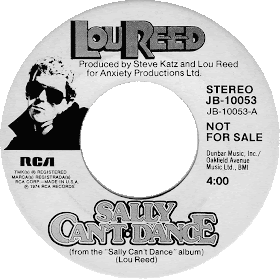Bitrate: 256
mp3
Ripped by: ChrisGoesRock
Artwork Included
Source: Japan SHM-CD Remaster
Captain Beyond, the first album by Captain Beyond, was released in 1972, and featured former members of Iron Butterfly, Deep Purple, Johnny Winter, and Rick Derringer. The album cover for the U.S. release included 3-D artwork (using lenticular printing). The album was dedicated to the memory of Duane Allman, as indicated on the back cover.
Captain Beyond is unique among predominately guitar driven hard rock albums in the fact that it contains a wide range of rock, heavy metal, and jazz influences often with various time signatures and broad range of dynamics (music) within the same song. The first five songs are composed in a fairly straight forward manner but the remainder of the album consists of two "suites" of tightly arranged interconnected songs; the first starting with "Thousand Days of Yesterdays (Intro)" and ending with "Thousand Days of Yesterdays (Time Since Come and Gone)" The second starts with "I Can't Feel Nothin' (Part 1)" and finishes the album Songs flow directly into each other without benefit of any lag time between selections, a feature that is shared with other more progressive bands of the era such as Moody Blues, and Jethro Tull.
Captain Beyond was an American/British rock band formed in Los Angeles, California in 1971.
The original line-up for Captain Beyond were singer Rod Evans (ex-Deep Purple), drummer Bobby Caldwell (ex-Johnny Winter), guitarist Larry "Rhino" Reinhardt (ex-Iron Butterfly), bassist Lee Dorman (ex-Iron Butterfly) and keyboardist Lewie Gold. Gold left due to personal reasons before the first album was recorded. The remaining line-up recorded the self-titled debut album, released in 1972. Following this album Caldwell left the band to join Derringer and was replaced by drummer Brian Glascock. Also joining the band around this time were Reese Wynans on keyboards and Guille Garcia on congas. The record company's chosen producer, Giorgio Gomelsky, did not like Glascock's drumming and requested a new drummer. Glascock was released and Marty Rodriguez was brought in on drums on the recommendation of Garcia. This six man lineup recorded the group's second album, Sufficiently Breathless. Tension during the recording led to Evans quitting. The original lineup reformed later in 1973 for a US tour but the band split up at the end of the year.
Lee Dorman in Chmelnice club in Prague, in 2010
The band reformed in 1976 with Willy Daffern on vocals, and Bobby Caldwell, Rhino and Lee Dorman completing the line-up. They recorded the band's third album Dawn Explosion on Warner Bros., but broke up in 1978.
Reinhardt and Caldwell reformed Captain Beyond in 1998 with Jimi Interval on vocals, Dan Frye on keyboards, and Jeff Artabasy on bass.
Since then they have been performing at shows and have released a four track EP.
In 1999, Swedish record label Record Heaven released a tribute to Captain Beyond entitled Thousand Days of Yesterday. The album features fellow 1970s rockers Pentagram playing Dancing Madly Backwards.
Captain Beyond once again disbanded in 2003 when lead guitarist Larry Reinhardt developed cancer. Following treatment, Reinhardt continued to perform music until late 2011, when he again fell ill. He died on January 2, 2012. Bassist Lee Dorman died on December 21, 2012.[Wikipedia]
Captain Beyond is a one-of-a-kind progressive album with rock, heavy metal, and jazz influences with a "space rock" lyrical bend. Formed by former members of Deep Purple (Rod Evans, vocals), Iron Butterfly (Rhino, lead guitar, and Lee Dorman, bass), and Johnny Winter (Bobby Caldwell, drums) Captain Beyond is an album that flows from riff to riff, drumbeat to drumbeat, often with various time signatures within the same song. Taking a tip from the Moody Blues, songs flow directly into each other without benefit of any lag time between selections. Taken as a whole, the album is kind of a rush, as quick, riff-laden guitar lines predominate for a few songs before slowing down temporarily into a lull until the next takeoff.
Lyrically, the album differentiates itself by exploring themes of the outer world and meanings of existence, often with references to the moon, sea, sun, and so on. Listeners may get the feeling of taking a journey to space in a rocket ship headed for destination unknown. Musically, the album is superior in all aspects. Rod Evans has a strong rock voice, Rhino plays an enormous amount of hook-laden guitar lines, and Lee Dorman plays complex basslines (for example, at the end of "As the Moon Speaks-Return") that lead to typically rhythmic, nimble Bobby Caldwell drumming. The tightness between musicians is enormous, never lets up for long, and leaves the listener feeling like the ride should continue for the indefinite future. [AMG]
Personnel:
♣ Rod Evans – vocals
♣ Larry "Rhino" Reinhardt – guitars
♣ Lee Dorman – bass guitar, piano, Hammond organ, vocals
♣ Bobby Caldwell – drums, percussion, Hammond organ, bells, vibraphone, vocals
01. "Dancing Madly Backwards (On a Sea of Air)" – 4:08
02. "Armworth" – 2:50
03. "Myopic Void" – 3:37
04. "Mesmerization Eclipse" – 3:45
05. "Raging River of Fear" – 3:48
06. "Thousand Days of Yesterdays (Intro)" – 1:30
07. "Frozen Over" – 3:55
08. "Thousand Days of Yesterdays (Time Since Come and Gone)" – 4:05
09. "I Can't Feel Nothin' (Part 1)" – 3:07
10. "As the Moon Speaks (To the Waves of the Sea)" – 2:30
11. "Astral Lady" – 1:15
12. "As the Moon Speaks (Return) – 2:16
13. "I Can't Feel Nothin' (Part 2)" – 1:11
1. Link
or
2. Link
.





























